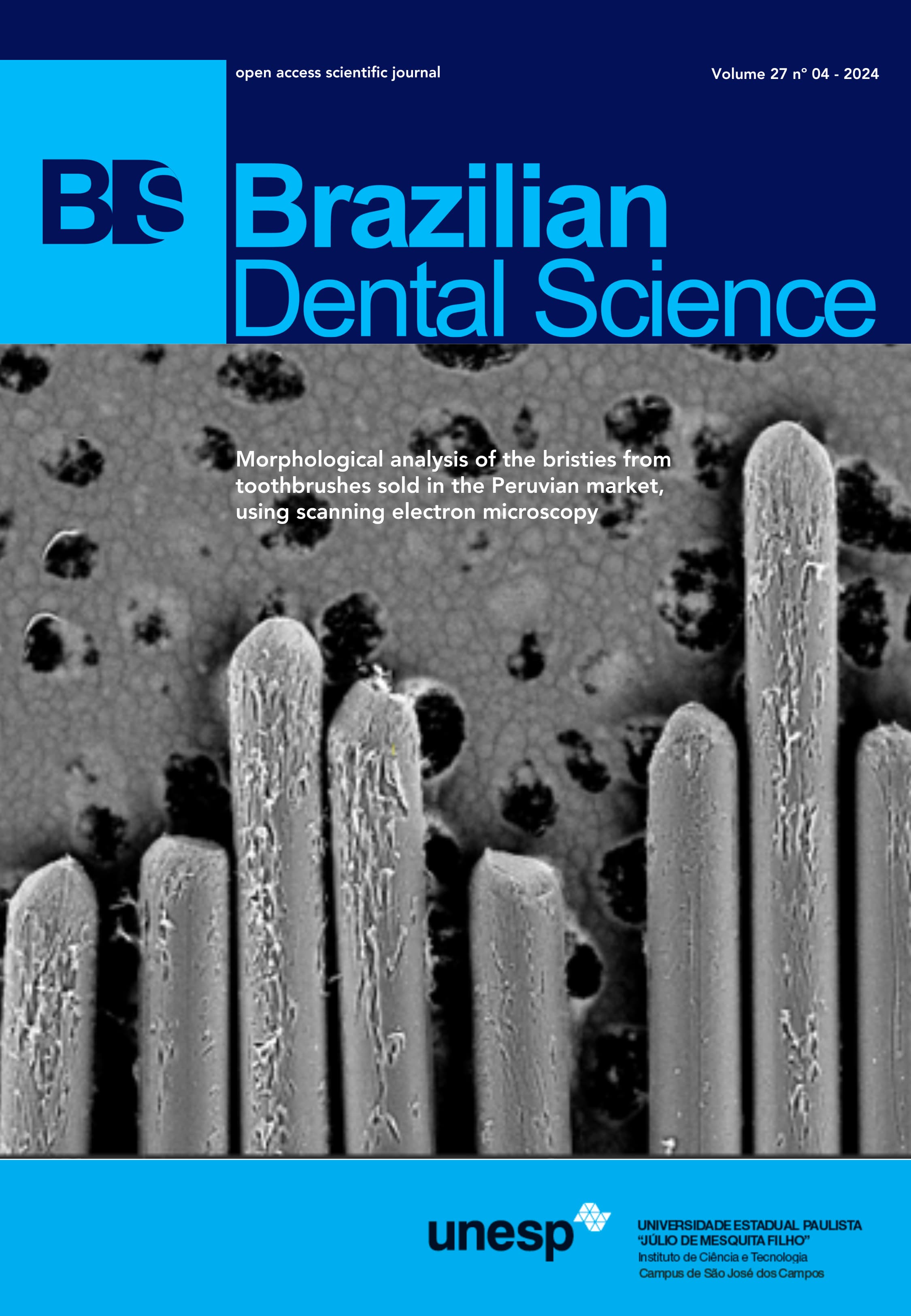Evaluation of flexural strength and degree of conversion of temporary crown materials at different aging periods in artificial saliva
DOI:
https://doi.org/10.4322/bds.2024.e4368Abstract
Objective: Evaluate the effects of different storage periods on flexural strength (FS) and degree of conversion (DC) of Bis-Acryl composite and Urethane dimethacrylate provisional restorative materials. Material and Methods: A total of 60 specimens were prepared from four temporary crown materials commercially available and assigned to four tested groups (n = 15 for each group): Prevision Temp, B&E CROWN, Primma Art, and Charm Temp groups. The specimens were stored in artificial saliva, and the FS was tested after 24 h, 7 d, and 14 d. A standard three-point bending test was conducted using a universal testing machine. Additionally, the DC was determined using a Fourier transform infrared spectroscopy (FTIR) device. The data were analyzed statistically using twoway ANOVA, Tukey`s HSD post-hoc test, and the Bonferroni test, all at a 5% significance level. For each group, a paired samples test was applied to compare the DC of the immediate and 24 h samples. Results: The highest FS value was found for the Prevision Temp material, while the Charm Temp material showed the lowest FS, with no statistically significant difference between the mean values of the groups at 24 h; while there were significant differences at 7d and 14 d of storage. However, within each group, the aging had no significant impact on the FS, except for an increase in the FS of the B&E CROWN group after 14 d. Prevision Temp also had the highest mean DC value. At each time interval, significant differences were recorded. Moreover, within each group of material, aging significantly increased the DC, except for the Primma Art. Conclusion: Bis-acryl composite resin materials exhibited higher flexural strength compared to traditional methyl methacrylate resin during the 14 d investigation period. Aging in artificial saliva did not significantly affect the mechanical performance of the tested materials. Materials with higher DC values showed greater flexural strength; where the Prevision Temp showed higher FS and DC values than the other tested materials.
KEYWORDS
Aging; Artificial saliva; Degree of conversion; Flexural strength; Temporary crown material.
Downloads
Published
How to Cite
Issue
Section
License
Brazilian Dental Science uses the Creative Commons (CC-BY 4.0) license, thus preserving the integrity of articles in an open access environment. The journal allows the author to retain publishing rights without restrictions.
=================




























